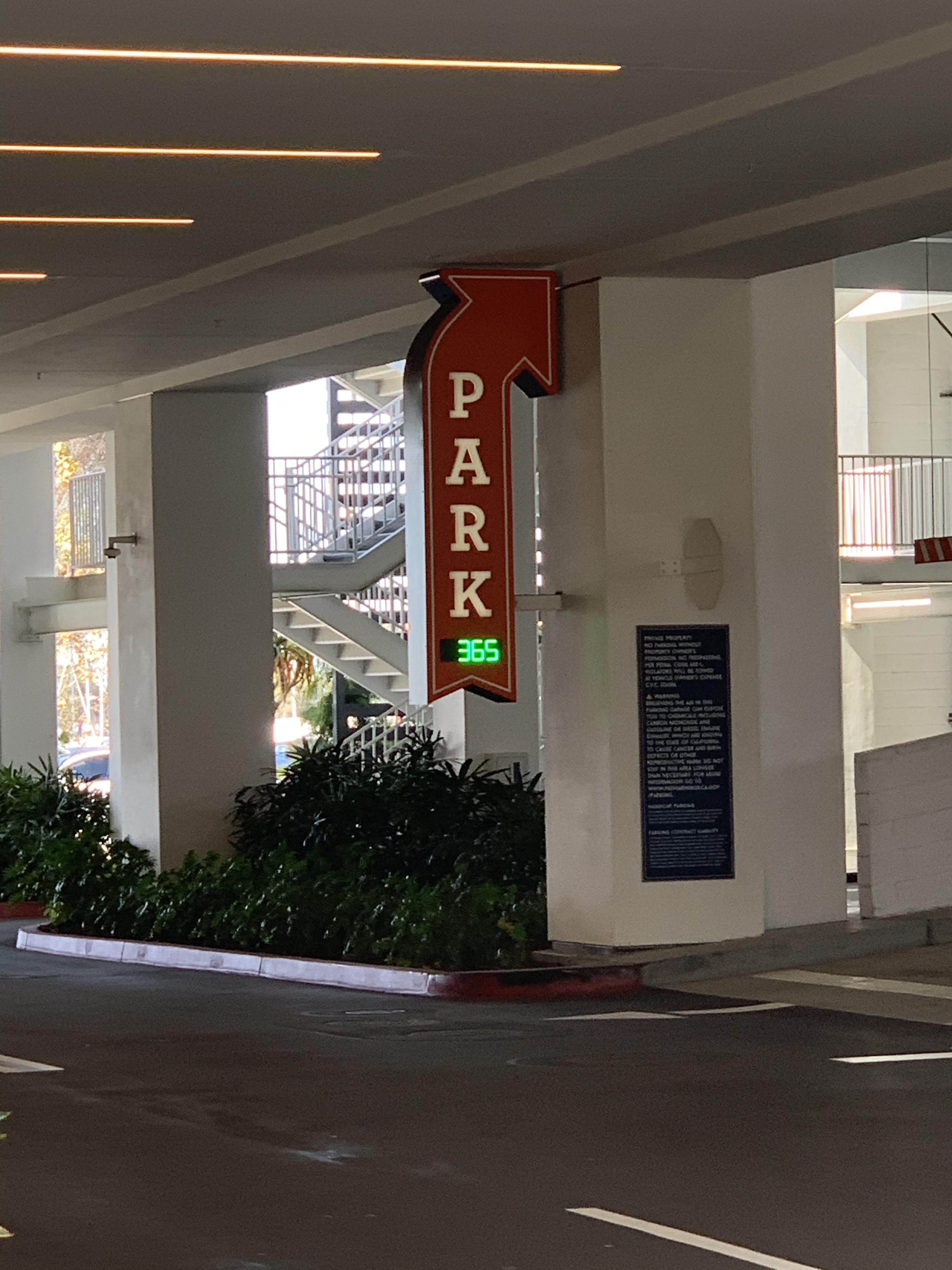The ABCs of Parking Guidance
Have you ever wandered aimlessly through a huge, packed parking lot or garage looking for that elusive parking space? You probably got increasingly frustrated as you drove through aisle after aisle, looking at row after row of parked cars, not an open space in site. The longer you looked, the later you became for work, an appointment, or a flight. Finding a parking space is often an exercise in frustration.
All that began to change about a decade ago with the introduction of parking guidance technology. Parking guidance systems use cameras or ultrasonic sensors to monitor parking occupancy and then transmit that information to strategically located signs at the entrances of parking facilities and on individual floors of multilevel garages. Some even give row by row updates.
When drivers approach the facility, signs tell them how many spaces are available in the facility at that moment, and many provide that information for each floor. Then, as drivers move throughout the facility, they see real-time updated information as they approach each floor.
Traditionally, there have been two types of parking guidance technologies. The first systems were car counting systems. These systems count vehicles as they enter and exit facilities and then calculate how many spaces are free in the facility. Car counting systems are simple and affordable, but they haven’t traditionally been particularly reliable. As a result, they were often referred to as “occupancy guessing” systems, rather than parking guidance systems.
Over the past decade single space guidance technology was introduced. These systems use either cameras or ultrasonic sensors mounted over individual spaces or a small number of spaces to determine whether individual parking spaces are available and use a series of color-coded lights (green=available; red=occupied; blue=HP) to direct drivers to an open space.
Single space systems are much more accurate than traditional car counting technology (typically 97-99% accurate), but they are also much more expensive, costing anywhere from $500 to $1,000 per space. So, for a moderately sized garage with just 1,000 parking spaces, the cost of installing a reliable guidance system could run anywhere from $500,000 to $1,000,000—and that doesn’t even take into account operational, service, and maintenance costs.
 When it comes to parking guidance, owners have always had to choose between accuracy and cost. An offering didn’t exist where both high accuracy and affordability were offered.
When it comes to parking guidance, owners have always had to choose between accuracy and cost. An offering didn’t exist where both high accuracy and affordability were offered.
But, with the recent introduction of parking guidance utilizing intelligent cameras and specialized software, owners are no longer faced with this choice. With these systems, intelligent cameras are located at the main entries, entrances and exits of individual parking floors, and even specific zones to monitor incoming and outgoing traffic. The cameras count cars entering and exiting the structure, as well as each individual floor. They also recognize different vehicle types and differentiates them. That data is compiled and analyzed in real time to determine how many spaces are available in the parking facility, as well as on each floor and zone.
The data is then transmitted to strategically located LED signs located at the facility’s entrance and throughout each floor. When drivers enter the garage or lot, the entry sign tells them how many parking spaces are available throughout the garage. As they drive, signs at each level tell them how many spaces are available on that level. The systems also have machine learning built-in, a form of artificial intelligence, so they continuously improve themselves operationally. Therefore, like single space sensor systems, purpose-built cameras coupled with machine learning can achieve the same level of accuracy as single space system; 99.9% accuracy.
These systems also provide invaluable utilization data. With intelligent camera systems parking owners receive data, not just about occupancy (how many spaces are filled as a percentage of the total number of spaces), but about when the facility is busiest, what types of vehicles are parking there, and which zones fill first. The types and amount of data available to parking owners increases dramatically if PARCS and LPR are installed, as they easily integrate with intelligent cameras.
This information can be used by owners and operators to better manage their parking resources and set pricing levels. It can also give facilities a competitive edge over other area facilities by dramatically improving the parking experience.
Intelligent camera systems offer the best of both worlds: the accuracy of single space systems at a fraction of the cost. With intelligent camera technology, parking guidance has finally achieved its true potential.

